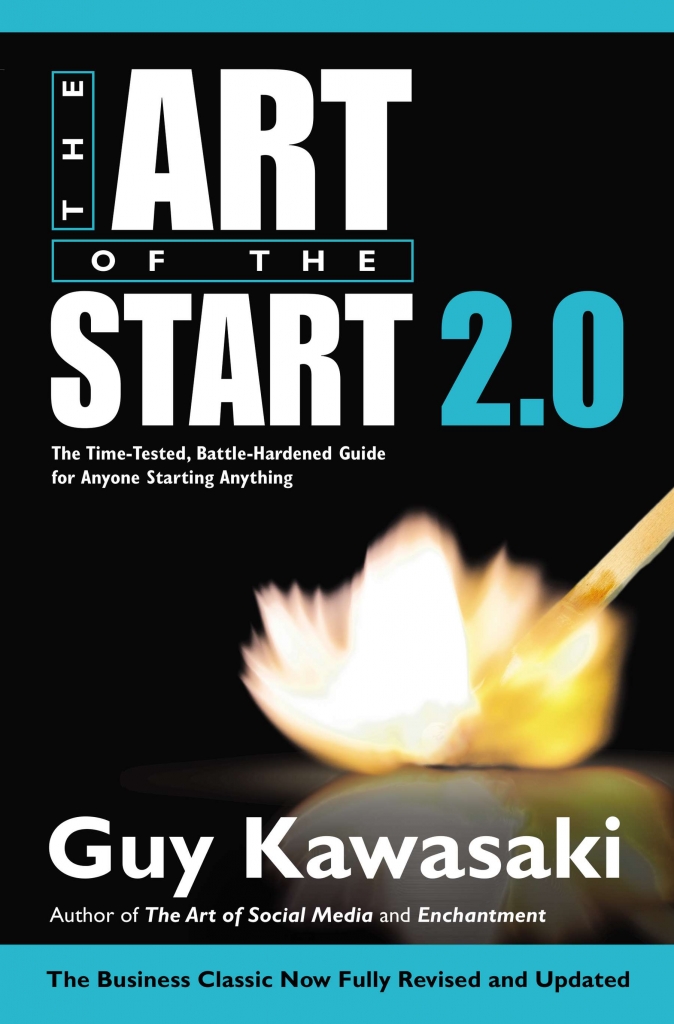By Guy Kawasaki (2015)
Pages: 316, Final verdict: Great-read
The Art of the Start 2.0 is the follow up to the 2004 guide for creating a company The Art of Start, now revised to take into account the huge development in the startup world since then.
Guy Kawasaki, the author, is a marketing expert, who is very well known in the startup world, mostly for his work as a technology evangelist for Apple in the 80s and his more recent books Enchantment, and of course The Art of the Start itself. Having read the original many years ago, I recently decided to give the 2.0 version a try.
How to start a company
The Art of the Start 2.0 is organized into 13 chapters, from "The Art of Launching" to "The Art of Socializing". Each of them containing tips, and lots of bullet point lists about what to do in each of the areas, under the overarching theme of starting a technology company.
As an example, the first chapter is about the very first steps in creating a company:
- Finding a business idea at the intersection of your Expertise, Passion and Opportunity
- What to look for in a co-founder
- Writing a mantra (3 to 4 word sentence) about the meaning you want to achieve
- Defining your business model
All these topics, and more, are discussed in the 24 pages of the first chapter. This means that we get a brief introduction to the most important aspects to take into account, but none of them is discussed in depth.
One of the parts I found most interesting in the beginning of the book was the explanation about the importance of Positioning. It further convinced me that positioning a startup is one of the most core strategic decisions to take. Your Positioning should explain what your company does and how it is different from competition.
It will make it clear what you advantage is in terms of things such as cost, ease of use, performance, or range of selection. For example, if your competitors build increasingly more expensive products, there will be an opening for a new company to position itself as a low-cost alternative. Guy gives this example of good positioning "Lexus: As good as Mercedes or BMW, but 30 percent cheaper". More than a marketing message, your positioning will define what kind of product you build.
"Most companies use the same terms to describe their product. It's as if they all believe that their customers have never heard a product described as 'high quality,' 'robust,' 'easy to use,' 'fast,' or 'safe.' - Guy Kawasaki
Build a great product
The rest of the book covers a wide variety of topics but one common theme is that the basis of the company should be a great product. If you build something great you will have have an easier job selling it, getting investment, or even hiring an A-team. Although Guy shares many tips for selling better, I really like that his first suggestion is always to focus on building a great product.
From all the topics covered, I would like to highlight the four that stood out the most to me:
- Bootstrapping - Building a company without external investment. For most businesses, new technologies like cloud computing have it made it easier than ever to start up without investment.
- Fundraising - If you really do need investment, try crowdfunding when you don't have a product yet. Later, attract venture capitalists when you have gained traction (lots of users, or even better: sales).
- Pitching - 10/20/30 rule for presentations: max. 10 slides, max. 20 minutes, min. 30 font size.
- Being a mensch - On the last chapter of the book, Guy explains that we should aim at being a mensch: someone who helps others without expecting anything in return (well described in this video).
More than a book about how to create a company, I feel like The Art of the Start 2.0 is about how to be a startup founder (according to the prevailing startup culture of our days). You have to know how to network, follow certain rules when fundraising, etc.
Bottom line
Guy is clearly very experienced at explaining things in a simple way. Each chapter has one summary paragraph to help us understand what it was about. The e-book version has many links which you can follow to learn more about the references, and Guy even highlights quotes of himself. All this makes the book entertaining and easy to read. It feels a lot like reading a blog: a great way to learn a lot about different things in a short time but you have to go do some more reading by yourself if you really want in-depth knowledge.
And although this is a revised edition (2.0), I sometimes still had the feeling that some of the things were outdated, for example when Guy advocates for using Google+ for social media promotion.
For someone who is just starting in the startup world, The Art of the Start 2.0 will definitely bring them far along in very short time. (I clearly remember I first learned about bootstrapping when I read the first edition of The Art of Start).
For all others, who have been in startups for a while or who are looking for deep insights on how to create a company, The Art of the Start 2.0 is probably still a good checklist for getting your basics right, but there are better books out there like The Hard Thing about Hard Things, The Four Steps to the Epiphany or The Lean Startup.
Further learning:
- Buy the book online.
- Check out Guy Kawasaki's personal website.
- Follow the author on Twitter.



